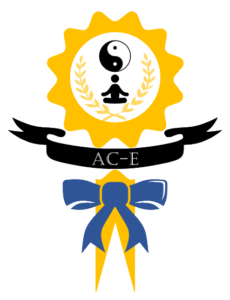It’s been a week since I’ve returned from Grapevine, Texas where the Agile 2024 conference took place. I want to provide some reflections for public consumption, more than I want to report on my attendance and what I thought of individual sessions. I will be mixing in a few themes that seem to be current on LinkedIn as well.
I spent most of my time during the day in the “Audacious Salon” track, which this year covered three themes:
- Agile roles, and the greater community, are having an identity crisis.
- Agile has become exactly what big business needs it to be.
- The psychological cost of becoming agile is high.
Each of these was illuminated from different perspectives using a handful of participatory session formats. I did not get to experience all the formats, but I did attend at least one session within each theme.
Besides going to the keynotes, I also attended Julie Bright’s talk on flow, Michael Sahota’s session on self-deception, the Reimagining Agile panel, Richard Dolman’s culture session, and Cherie Silas’ talk on using an invitational approach to agile coaching. Mid-week I dropped in on two pretty good open space sessions, and offered my own as well, which had good attendance (35 people). The Audacious Salon themes were each summarized with talks labeled as “emergent”, given by someone who had committed to attending all sessions within a theme, and sharing their overall takeaways. I chose the ones on Psychological Cost/Emotional Odyssey with Julie Bright and on Agile Identity with Michael Sahota.
From the current LinkedIn chatter I brought the following “lenses” into the event: the recent big layoffs in our profession and the heart-breaking posts by people getting to the end of their rope (mentally, financially, etc.), the various posts about Agile being dead or having won, the debate about what an agile coach is/does and what value they bring, the dismal employee “engagement” numbers from Gallup, etc.
Context
Before diving in, I also want to set additional context. I consider Agile being in the “Late Majority” to “Laggards” portion of the Everett Rogers “Diffusion of Innovations” curve, popularized by Geoffrey Moore in “Crossing the Chasm”. How accurate this is depends on which sector of the economy a company is in and what exactly its core business is.

For another part of context, my own studies and experience have led me to earn accreditation as a Human Systems Dynamics Professional (HSDP), which means I’ve demonstrated skills in working with and within complex adaptive systems (i.e. organizations full of human beings) and had those skills evaluated. I’ve also earned an ICE-EC accreditation, based on Integral Theory and Complexity Science, again with demonstration and evaluation of skills and work performed. I also invested into becoming a licensed facilitator of the (now somewhat dormant) Agile Fluency® Model Diagnostic. Apart from these recent milestones, I’ve had a long career in software development in both startups and “scaled” environments, and have been a practicing Scrum Master, trained by Ken Schwaber and Jeff McKenna, for close to two decades, maintaining my CSP-SM and CSP-PO with the Scrum Alliance. I mention those things to illuminate my background briefly.
Organizations
Laggard organizations are exceedingly hard to work with, and that’s probably part of what’s contributing to the layoffs that are happening. The Laggards (and maybe even the Late Majority) may have attempted multiple times to “get the Agile”, and I’m guessing they hired the cheapest hands they could find (i.e. people fresh out of their initial 2-day CSM class), and most of their attempts failed. It’s not a big surprise that those companies would stop their agile efforts at some point. Or that they start looking for people who have substantial experience, expressed in job postings that require 10+ years of work in the field. (Aside – This observation came up in one of my many hallway conversations: Such time-based requirements make it difficult for young people to break into the profession – more on that later). And then there are the other companies who claim that they’ve accomplished their mission, integrated agile ways of working completely into their daily operations, and thus don’t need help anymore. I think both camps are missing something, especially when you look at the dismal Gallup employee engagement numbers (only 1/3 of employees are “engaged”). Let’s take a brief look at what I think they’re missing.
A “Helping Profession”
For sake of simplicity, I will consider “Scrum Master” and “Agile Coach” equivalent roles, after all the Scrum Guide itself says that Scrum Masters work with the organization to help it get benefit from Scrum. My interpretation of the Scrum Master role is perhaps a bit unusual. I consider it to be a true innovation in job “categories”, and a very “recent” one too, so it’s not a “well-known” entity in the corporate landscape yet (Joel Bancroft-Connors recently pointed out that social innovations take 17-68 years to take hold in companies). In my view, never before has there been a role in organizations that operates without formal power, and that is looking out for the professional wellbeing of teams and individuals at work, embedded within teams on a daily basis, helping them become a high-performing. Managers have power, and tend to focus on helping individuals perform well (or letting them go if they don’t). HR people have some power and mostly make sure benefits packages exist and rules/policies are followed. Program managers have a little power, but mostly coordinate work between teams and manage schedules and handoffs, lacking the daily “embeddedness”. I consider Scrum Master/Agile Coach a “helping profession” that is trying to improve our work environments (the Agile Alliance is about working to “build a more effective, humane, and sustainable way of working”, and the Scrum Alliance lists these as the responsibilities of an Agile Coach: Facilitates agile adoption and transformation; Enhances team collaboration, self-management, and effectiveness; Promotes a culture of continuous improvement; Improves communication and collaboration; Navigates organizational change; Develops agile leadership) To me that looks a lot like looking out for people’s wellbeing at work. And that is a radical departure from almost every other existing role in corporate settings. Maybe it’s no wonder that corporations don’t understand that quite yet, and especially the Late Majority and Laggards. So: layoffs. And Agile has both won (Innovators, Early Adopters, Early Majority) and is dead (Late Majority, Laggards) – or at least on life-support. The way the world is moving towards more VUCA/BANI, even the Late Majority and Laggards (that survive) will need help eventually.
The Difficulty of Ascribing Value
A factor that makes it difficult to clearly articulate the value of an Agile Coach or Scrum Master, potentially leading to layoffs, lies in concepts from Systems and Complexity Thinking. Human systems (i.e. any organizations) are made up of semi-autonomous agents (people) who interact, creating patterns of behavior and culture. Those patterns in turn influence future behavior and interactions, giving rise to complex, emergent situations. In Systems Thinking, a particular nuance of the concept of Causal Loops / Diagramming can illustrate the fundamental difficulty in substantiating the value an Agile Coach or Scrum Master brings: delayed effects. When a skilled Agile Coach initiates an intervention, it can take months or years for the results to be seen. By the time the effects can be measured, it is usually impossible to trace a cause-effect relationship, and thus the intervention’s origin may be forgotten or ignored. Again: layoffs.
Add to the above the idea that Agile Coaches often operate under the guidance of acting as “Servant Leaders“, and you may be able to see that self-promotion and accumulation of power or status are not typically traits they exhibit. And when that’s the case, these kinds of people may be reluctant to “blow their own horn”, which can exacerbate the perception that they don’t provide any value to the “bottom line”. And: layoffs.
Agile 2024
With the above out of the way, here are my impressions from Agile 2024, along with a bit of commentary. After years of isolation due to the global pandemic, it feels safe and fair to say that getting together in person is a huge boost to the agile community. People feel more energized and able to keep going with improvement work, despite all the obstacles being encountered.
Reimagining Agile
I’ve always been a bit puzzled at the Reimagining Agile effort that was started some time ago, because I’m not sure there’s anything that needs reimagining. To me it’s a fine ambition to “uncover better ways – by doing and helping others do”. There will always be better ways to uncover, and we can only really uncover them by doing something. There’s an endless debate about “doing agile” versus “being agile”, which I think is a red herring. You need both. Sometimes you act your way to new thinking, and sometimes a new way of thinking inspires different action. It’s like Lisa Feldman Barrett says in “Seven and a Half Lessons About the Brain” on the Nature versus Nurture debate: “We have the kind of nature that requires nurture.” And in HSD terms, there will always be an interplay between theoretical challenges and a practical challenges, which HSD integrates in a Learning Triangle.
But there was a whole keynote panel dedicated to Reimagining Agile, and the discussion ranged far and wide. Hopefully the whole session will be made available on the Agile Alliance website soon. Two messages stood out to me: The format may change, but the content stays (largely) the same – think about the original Star Wars movie, which changed formats many times: Original Theatrical Release, VHS tape, Laser Disc, DVD, Blu-ray, Streaming. Incidentally, the room was polled about how many people saw the original in 1977 (a veiled way of establishing what age people in the room were), and then how many people were under 30. The difference in hands going up was stark. Later, that fact led one panelist to wonder about how we would “pass the torch” to the next generation, which also stood out to me. I wonder if the responsibility for that falls on the agile community, elsewhere, or if it requires partnership(s)? How do other professions “pass the torch”?
Professionalizing ourselves
Speaking of passing the torch, one of the things other professions have done is establish what it means to be “in the profession”. The agile community is wrestling with all kinds of questions (see my opening context) that I think stem from the fact that we’ve never bothered to “professionalize” ourselves. I think the Agile Alliance, Scrum Alliance, ICAgile, Scrum Inc, Scrum.org and who knows what other organizations (Business Agility Institute, Agile2, Kanban University, etc. etc.) need to get out of trying to differentiate themselves from others, find a way to present an “integrated” profession, and from there have room for variants. Doctors have done it. Therapists have done it. Tradespeople have done it. Lawyers have done it. Accountants have done it. Why can’t we?! I think that’s a more needed conversation than Reimagining Agile. It would also make it easier for young people to enter the profession if we can agree on what it means and what it is. How about it, dear Agile Alliance board? Maybe a place to start would be to stop the divergence of the various “certifications” and find a way to converge on a few? Here’s a little dumb joke for you, related to that: “What do you call someone who graduates from medical school at the bottom of their class? Doctor.”
Companies would need to carry their share as well, making room for “fresh” people to start working and learning, rather than requiring 10+ years of experience. That kind of requirement is not unlike the idea that we can outsource the coding part of writing software through labor-cost-arbitrage – only to one day wake up and wonder why our ambition to be the country with the “architects” and low-cost countries being the “coders” left us with no more “architects” once they aged out of the workforce. There is no substitute for on-the-job-growth. To carry the medical joke from before a bit further, “residence”, anyone?
On Leadership, etc.
With most of my time spent in the Audacious Salon track, I want to say a few things about leadership, agile having become what big companies need, and the psychological costs of agile. I participated in a fishbowl session on “agile has become what big companies need”, and there was a lot of good discussion that I didn’t take notes of. Eventually I couldn’t stay out of the fishbowl anymore, though, because I had promised that I would bring into the conference the thing that my wife once said to me when I complained about how “they don’t get it”. Her question to me was “If they don’t get it, why aren’t you stepping into the job roles you’re complaining so much about?” Touché. Ouch. So I passed that question on, saying something like “Maybe the problem isn’t that agile has become what big companies need. Maybe the problem is that we have NOT become what we thing companies need. We have failed to evolve.” So I pass the question on to you “Why aren’t we stepping into leadership positions, if we know what’s needed there?” (I know my own answer, but it’s not relevant right now).
The Price We Pay
Another part of the Audacious Salon was a session talking about the statement “The psychological cost of becoming agile is high”, using a high-school debate format. I knew nothing about that format, so I became an observer, rather than joining a “for” or “against” team. In some ways the debate format seems quite pointless to me. All it does is draw up enemy lines and leads people to emotional distraction. I would find a well-framed dialogue session much more interesting, where the point would not be to try to convince anyone of “rightness” or “wrongness”, but simply to illuminate experience and ways of thinking, and letting unfold whatever might come of that, either in the moment or days, weeks, months, years or decades later. As it was, both teams brought muddled reasoning, both kind of saying “yes, there are costs, but they’re worth it”. Or they can be worth it, if things go well (or are “done right”).
Identity Crisis and Self-Deception
Michael Sahota presented a talk (with exercises) on the idea that we often deceive ourselves by holding other people in judgment about right and wrong. I think that session was recorded and might become available at some point. His antidote was a radical reframing of what it means to take responsibility for ourselves (weaving in Taylor Swift, no less) and the part we play in how whatever we are engaged in unfolds. We can use a modified version of the Johari Window to uncover our blind spots and start working on deceiving ourselves less. Maybe even become the hero of our own story – awareness is king. In his emergent wrap-up talk for the Audacious Salon sessions on the identity crisis Sahota touched on the dangers of “Ego” and how to journey into a self-transformation to “Tego” (I never quite caught what that stood for), bringing elements from what he calls Evolutionary Leadership into the conversation.
Culture
Richard Dolman led a session on cultural awareness and role modeling, which he intended as a reinvigoration talk. He used the Competing Values Framework (collaborate, create, control, compete) to illustrate culture (correcting the mostly-misreported quote about “culture eating strategy for breakfast” along the way) and weaving in that subcultures usually can (and do) exist, and that becoming clear on our personal style in relation to our manager’s style and the dominant culture helps with managing potential friction. Knowing more can help us normalize “resistance” and embrace it better. Observing and engaging when we see mismatches between agile-friendly role modeling and agile-averse role modeling lifts us up into personal responsibility, where we feel more satisfied, especially if we can build a community of people who role-model well.
Emotion and Flow
Julie Bright’s talk on flow and self-care was its own special highlight for me. I had checked out her talk slides ahead of time and since they were all pictures, I knew I had to go and experience the talk. I did not regret it for one second. I wish it had been recorded so I could point you to it. Here are just a few gold nuggets I took down: “Look into the darkness. But don’t stare.” “Only calm water can reflect the truth.” The Metta Prayer. Gratitude. May I Learn To Accept Myself. “Self-care isn’t Selfish, it’s Service.”
I connect that talk in my mind to the session Reese Schmit facilitated using a Liberating Structure called “Drawing Together“. It had us talking at our tables (where I was paired with Jenny Tarwater, who it was lovely to meet in person, finally), and incidentally saw Julie Bright for the first time. Reese handed us a prompt for making a drawing using mostly five special symbols (simple to draw) and then gave the whole thing a mind-bending twist that I don’t want to reveal. Suffice it to say it invited us to deeply step into an emotional space called empathy, without which we accomplish only very little in change work.
The final connection I’ll make is to Cherie Silas and her session on the last full day (in the last time slot) of the main conference, talking about using invitational approaches to our work. Invitation works better than imposition, but it’s often slower. And it preserves respect for people and their emotions, which often on the surface come across as resistance. But, as Cherie reminded us, Broken Process does not equal Broken People. If new processes really work, it will be felt when attempts are made to go back to old ways. Emotions signal that there’s a decision to be made. Become aware of them by training your attention on your body’s signals.
If I were to sum up Agile 2024 in a few words, they would be: We bring about change through Cultural-Awareness, Self-Awareness, Self-Care, Self-Leadership, Respect and Community.












